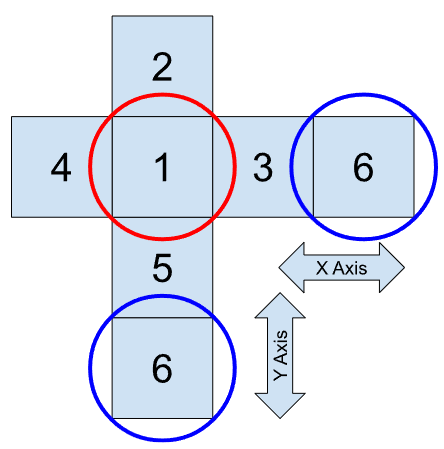I’m trying to make a game that requires the use of dice, and not just a simple random 1-6 generator. The dice is the actual playable character, and when you move, your dice rotates accordingly in that direction on a grid. I need to know how to detect which face is currently the one facing up at any point, and be able to get a value from it.
I have been toying around with the 3DBox object, but I cannot find any way to detect faces and its value. I’m also up for simulating it in 2D, if it’s somehow easier, though it seems to be VERY tricky at first glance, due to having to keep track of 3 axis rotations.
